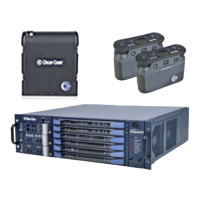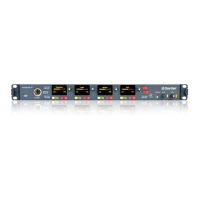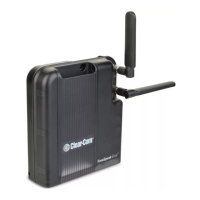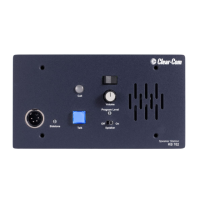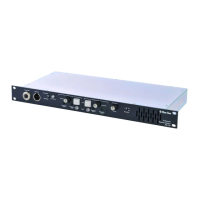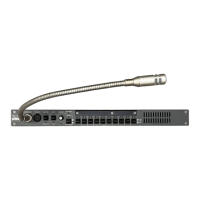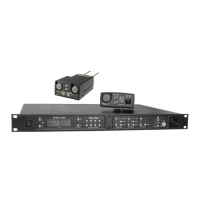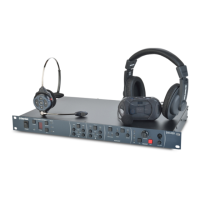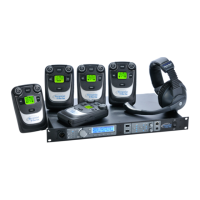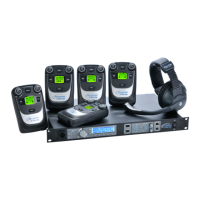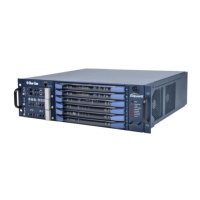FreeSpeak II for Eclipse | User Guide
7.9.2 Testing transceiver handoff
After testing the coverage areas for individual transceivers, test the handoff between the
transceivers. When you walk through a coverage area with the beltpack, the beltpack searches
to find the transceiver with the best signal strength, and switches transmission to that
transceiver. Therefore the beltpack continually hands off transmission among transceivers as
you move through the coverage area. You can determine which transceiver the beltpack is
connected to using the EHX configuration.
To test transceiver handoff, connect any additional transceivers in the installation and walk
through the coverage areas to ensure that the coverage is continuous and complete, without
audio breakups. Reposition transceivers if necessary.
7.9.3 Assigning beltpacks to coverage areas
Transceivers that operate in the 1.9 GHz band will handle up to 5 transceivers at any one time.
Transceivers that operate in the 2.4 GHz band will handle up to 4 transceivers.
Although they can achieve this in good conditions, this may not always be possible for a number
of reasons. First, interference or propagation problems may mean that not all transceiver slots
are available all the time. Second, a beltpack constantly searches for the best transceiver
signal, and may frequently switch transceivers. To make this transmission seamless, a beltpack
maintains the connection to its current transceiver until it is confident that the new transceiver is
functioning well. Therefore, for a short period of time during this transition, a single beltpack can
occupy slots on more than one transceiver.
This means that for zones likely to need coverage for five or more beltpacks simultaneously it is
recommended that a second transceiver is installed. Similarly, for good coverage for nine or
more beltpacks simultaneously, a third transceiver may be required (remember that the 2.4
band will support one less beltpack per transceiver).
7.9.4 Conditions affecting coverage areas
The environment in which a system is located affects the coverage area for any particular
beltpack/transceiver combination. The presence of walls, floors, ceilings, trees, shrubbery,
people, and numerous other items may affect the coverage zone. Metallic objects, safety doors,
lighting equipment, and bodies of water may possibly block transmission. These factors must be
taken into consideration when planning the installation.
7.9.5 Surveying a site in standalone (rigging) mode
You might need to scope a site (check the range and performance of a transceiver) without
connecting to a matrix. To do this, one or two beltpacks and transceiver can be put into
standalone or rigging mode. If you have two beltpacks, they automatically have duplex audio.
To put a beltpack and transceiver into standalone mode:
Page 92
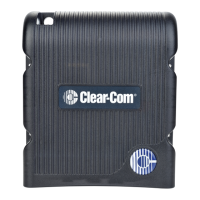
